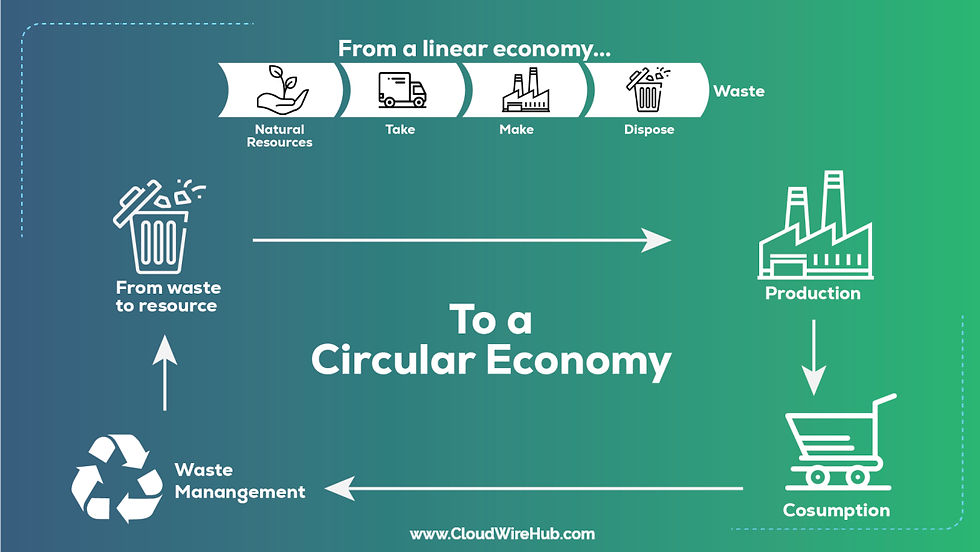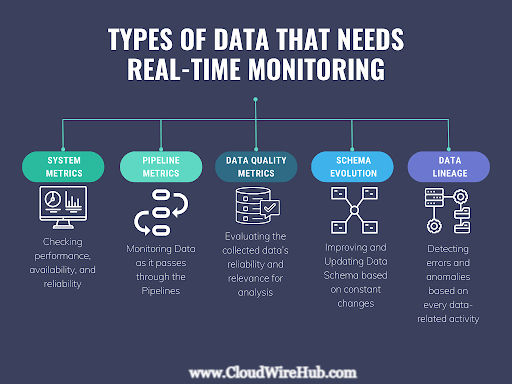🌿 Green Blockchain Strategies
- Shashank Mishra
- Dec 2, 2024
- 5 min read
Updated: Jun 18

In recent years, blockchain technology has faced growing scrutiny over its environmental impact, particularly due to energy-intensive mechanisms like Proof of Work (PoW) used by major cryptocurrencies such as Bitcoin. As the world focuses more on climate change and environmental sustainability, it becomes essential to make blockchain technology more eco-friendly.
Enter green blockchain strategies a range of approaches designed to reduce the carbon footprint of blockchain operations and support sustainable development. This blog explores how blockchains are evolving to be more environmentally conscious through energy-efficient consensus models, renewable energy adoption, carbon offsetting, real-time monitoring, and broader ecosystem collaboration.
⚙️ Transition to Energy-Efficient Consensus Mechanisms

🔁 Moving Away from PoW
Traditional blockchains like Bitcoin rely on Proof of Work (PoW) to validate transactions, which requires enormous computational power and electricity. In contrast, Proof of Stake (PoS) and other innovative mechanisms offer greener alternatives.
✅ Proof of Stake (PoS)
PoS requires validators to hold and lock a certain number of coins to participate in the network's consensus process. This eliminates the need for high-powered mining rigs, thereby drastically reducing energy usage.
Examples:
Ethereum (Post-Merge): Ethereum completed its much-anticipated transition from PoW to PoS in September 2022. According to estimates, this switch reduced Ethereum’s energy consumption by over 99.95%, making it one of the most significant green transitions in blockchain history.
Cardano: From its inception, Cardano was built using PoS. It emphasizes sustainability, energy efficiency, and academic rigor in its approach, making it a leading example of an environmentally responsible blockchain.
⚖️ Other Alternatives
Proof of Authority (PoA): This model uses a limited number of validators who are pre-approved, resulting in lower energy consumption. It is particularly suited for private blockchains.
Delegated Proof of Stake (DPoS): Used in platforms like EOS, this method involves token holders electing a small group of delegates to validate transactions, improving scalability and energy efficiency.
Proof of Space and Time: Used by the Chia Network, this model utilizes unused disk space rather than computational power, significantly lowering its environmental footprint.
🌞 Integration with Renewable Energy

🌬️ Green Energy-Powered Mining
One of the primary criticisms of PoW is the vast energy consumption. However, some mining farms are now utilizing renewable energy sources like solar, wind, hydro, and even geothermal energy to reduce their environmental impact.
Example:
Bitcoin mining facilities in regions like Iceland, Norway, and parts of Canada now use hydropower and geothermal energy, substantially decreasing their carbon footprint.
⚡ Energy Tokenization
Energy tokenization refers to converting renewable energy units into digital tokens using blockchain technology. These tokens can be traded, tracked, or redeemed, helping promote cleaner energy markets.
Example:
Energy Web Token (EWT): Aims to decarbonize the global energy sector by enabling a decentralized digital layer for the energy grid.
🌍 Carbon Offsetting and Carbon Credits

📊 Blockchain-Based Carbon Markets
Blockchain offers transparency and traceability, making it an ideal tool to support carbon credit markets. These systems allow businesses and individuals to buy, sell, and retire verified carbon credits to offset their emissions.
Example:
Toucan Protocol allows verified carbon credits to be tokenized and traded on-chain. These credits come from trusted registries like Verra and help blockchain users neutralize their environmental impact.
🌱 Carbon-Neutral and Carbon-Negative Pledges

Some blockchain projects go beyond neutrality and aim for carbon-negative operations by actively investing in reforestation, renewable projects, and carbon capture technologies.
Example:
Algorand has committed to offsetting its carbon emissions through partnerships with environmental organizations.
🔄 Circular Economy and Sustainable Supply Chains

Blockchain's immutable ledger makes it a perfect fit for promoting transparency and ethical practices in supply chains.
🔍 Supply Chain Transparency
Through the use of blockchain, companies can track the journey of products from raw material to shelf, ensuring eco-friendly sourcing and reducing greenwashing.
Examples:
VeChain: Provides solutions for tracking the authenticity and sustainability of products in industries like fashion and agriculture.
IBM Food Trust: Helps track food items from farm to fork, improving accountability and reducing food waste.
♻️ Recycling and Waste Reduction Incentives

By combining blockchain with smart contracts, systems can be created that reward individuals or companies for recycling and reducing waste.
Example:
Some blockchain projects offer token incentives for verified recycling actions through apps and smart bins integrated with IoT.
💚 Incentivizing Eco-Friendly Behavior

🎯 Green Tokens for Positive Actions
Blockchain projects can issue green tokens that reward users for participating in sustainable activities such as using public transport, conserving water, or installing solar panels.
Examples:
Impact Tokens can be earned by taking environmentally beneficial actions.
Power Ledger allows households to sell excess solar energy peer-to-peer, encouraging clean energy usage.

🤝 Partnerships and Global Alliances
🌐 Collaborating for Sustainability
The complexity of climate change demands cooperation across sectors. Several blockchain initiatives have formed alliances with governments, NGOs, and private companies to address sustainability challenges.
Examples:
Crypto Climate Accord (CCA): Inspired by the Paris Agreement, it’s an industry-led initiative with the goal of making all blockchains carbon neutral by 2040.
Energy Web Foundation: Focuses on building a low-carbon, customer-centric electricity system using blockchain.
These collaborations help ensure that blockchain innovation aligns with international environmental goals, including the UN’s Sustainable Development Goals (SDGs).
📡 Real-Time Monitoring and Environmental Reporting
🔗 Blockchain + IoT Integration
Combining blockchain with Internet of Things (IoT) devices allows for real-time tracking of emissions, water usage, temperature, air quality, and more.
Examples:
Smart contracts can automatically adjust operations or notify users when emissions exceed limits.
Factories can monitor pollution levels in real-time and make data publicly available to regulators and the public.
📃 Transparent and Immutable Reporting
Blockchain ensures data integrity, immutability, and traceability, which is especially important for sustainability audits, ESG reporting, and environmental regulation compliance.
🌾 Regenerative Finance (ReFi)
ReFi (Regenerative Finance) refers to a growing movement that uses blockchain to fund and verify projects that restore ecosystems and communities rather than just sustain them.
🌳 Examples of ReFi Applications:
Funding reforestation projects through tokenized tree-planting campaigns.
Tracking the effectiveness of carbon sequestration projects in real time.
Enabling decentralized donations to biodiversity conservation efforts.
ReFi introduces a new model of economics, one that rewards regeneration over extraction a fundamental shift in how value is defined in financial systems.
🧠 Governance, Education, and Awareness
Education and policy also play a major role in driving green blockchain strategies.
📚 Education
Developers and blockchain users need awareness about energy consumption and eco-friendly development practices.
Workshops, certifications, and university courses are emerging to address this.
🏛️ Governance and Standards
Establishing governance frameworks to monitor, audit, and limit energy use is key.
Green blockchain protocols often provide sustainability scorecards to guide projects toward compliance with environmental standards.
💡 Examples of Green Blockchain Projects
Ethereum (PoS): Reduced its energy use by more than 99.95% after The Merge.
Chia Network: Uses Proof of Space and Time, offering a low-energy alternative to PoW.
Algorand: Carbon-neutral and partners with sustainability projects.
Cardano: PoS-based and actively engaged in research-driven green development.
🧾 Conclusion
Green blockchain strategies are more than just a trend they are essential for the long-term viability of decentralized technology in a warming world. As energy costs and environmental concerns rise, blockchain must evolve into a sustainable, transparent, and collaborative ecosystem.
From the switch to PoS and renewable energy to carbon credits, ReFi, and real-time tracking, the industry is actively reshaping itself. By integrating with global sustainability movements like the UN’s SDGs, and embracing innovative governance and incentive models, blockchain is positioning itself as a tool not just for finance, but for planetary stewardship.
The future of blockchain lies in its ability to decentralize not just money, but also responsibility for the climate, communities, and generations to come.



Comments